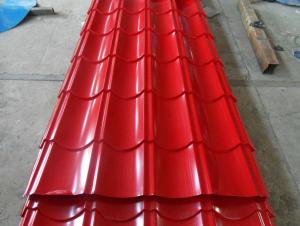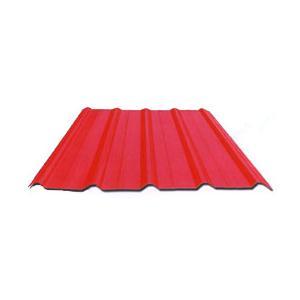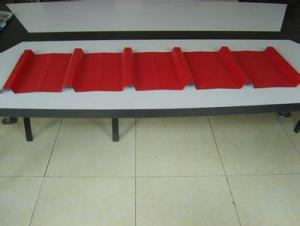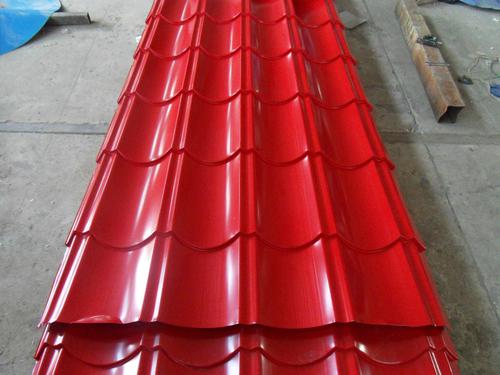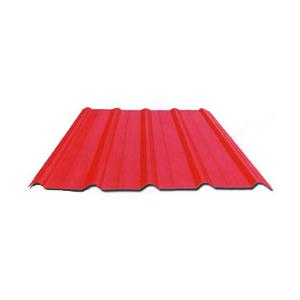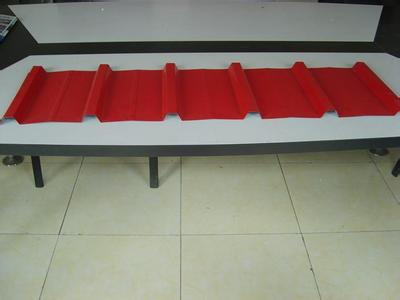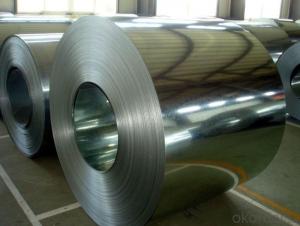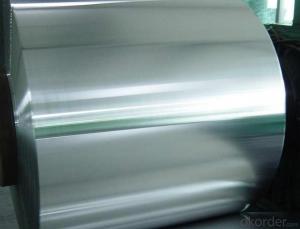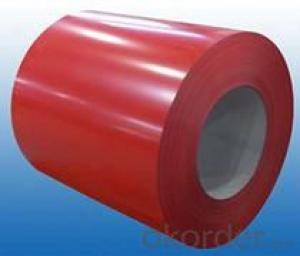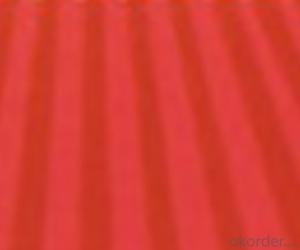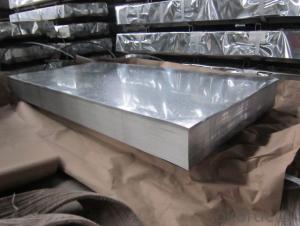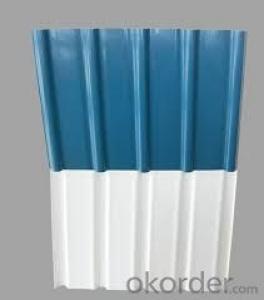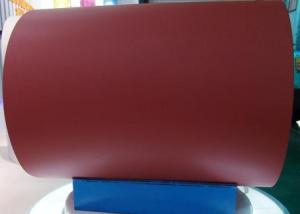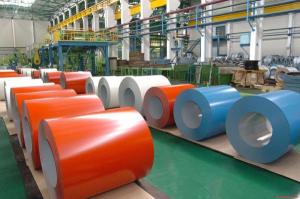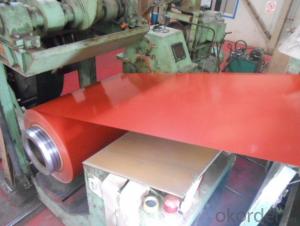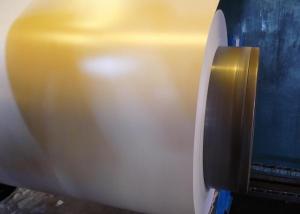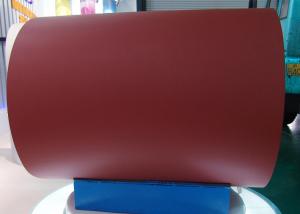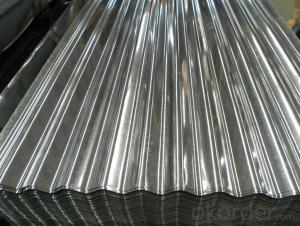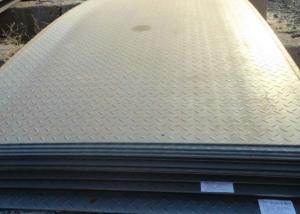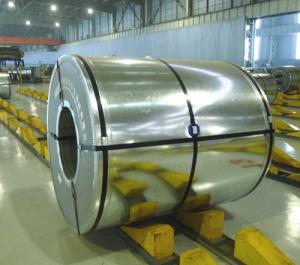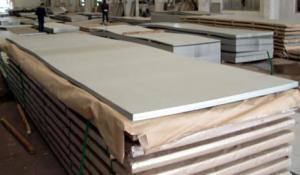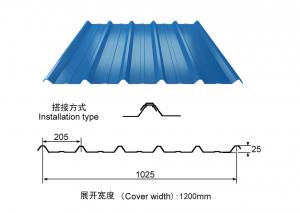Pre-Painted Galvanized Corrugated Steel in Brick Red
- Loading Port:
- Shanghai
- Payment Terms:
- TT or LC
- Min Order Qty:
- 100 m.t.
- Supply Capability:
- 10000 m.t./month
OKorder Service Pledge
OKorder Financial Service
You Might Also Like
1. Pre-Painted GI/GL Steel Coil Description:
With GI as base material, after pretreatment (degrease and chemical treatment ) and liquid dope with several layers of color, then after firing and cooling, finally the plate steel is called pre-painted galvanized (aluzinc) steel. Pre-painted galvanized steel is good capable of decoration, molding, corrosion resistance. It generally displays superior workability, durability and weather resistance.
2.Main Features of the Pre-Painted GI/GL Steel Coil:
• Excellent process capability
• Smooth and flat surface
• Workability, durability
• Excellent heat resistance performance
• High strength
• Good formability
• Good visual effect
3.Pre-Painted GI/GL Steel Coil Images
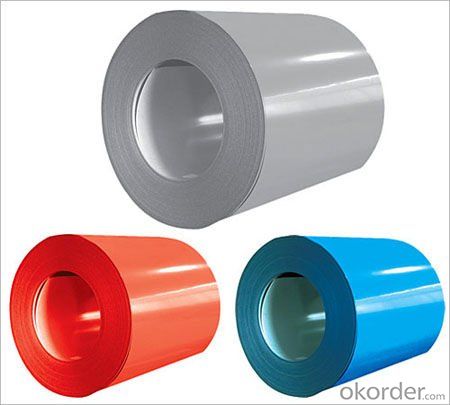
4.Pre-Painted GI/GL Steel Coil Specification
Standard: AISI, ASTM, BS, DIN, GB, JIS
Grade: DX51D, DX52D
Thickness: 0.17-2.0mm
Brand Name: KMRLON
Model Number: coil
Type: Steel Coil
Technique: Cold Rolled
Surface Treatment: Coated
Application: Boiler Plate
Special Use: High-strength Steel Plate
Width: 20-1250mm
Length: customized
commoidty: pre-painted galvanized steel coil
Thickness: 0.13-4.0mm
width: 20-1250mm
zinc coating: 40-180g/m2
printing thickness: top side: 20+/-5 microns, back side: 5-7 microns
color: all RAL color
surface treatment: color coated
coil weight: 4-7 tons
coil ID: 508/610mm
packaging: standard seaworthy packing
5.FAQ of Pre-Painted GI/GL Steel Coil
1. What’s the application of this product?
Roof, roof structure, surface sheet of balcony, frame of window, etc.
2. What’s the brand of the paint?
We use the best brand of all of the word—AKZO.
3. How to guarantee the quality of the products?
We have established the international advanced quality management system,every link from raw material to final product we have strict quality test;We resolutely put an end to unqualified products flowing into the market. At the same time, we will provide necessary follow-up service assurance.
4. How long can we receive the product after purchase?
Usually within thirty working days after receiving buyer’s advance payment or LC. We will arrange the factory manufacturing as soon as possible. The cargo readiness usually takes 15-25 days, but the shipment will depend on the vessel situation.
- Q: What is muotileaved spring? What is the little leaf spring?
- In spring, the length of different, but the same as the total thickness of section steel plate spring, called multi leaf spring. The utility model is characterized in that the cross section of the spring leaf assembly is trapezoid with many pieces and large weight.In order to reduce the weight of the car, a new spring steel plate structure is adopted, which means that the middle section of the single spring is the thickest and becomes thinner at both ends. It is not a uniform section steel plate. This is a characteristic of equivalent plate to plate with several pieces of characteristics, therefore, the number of leaf spring assembly is reduced, and each piece of spring is tapered spring, the number of leaf spring assembly can be reduced to 2-3, and the performance achieved over the past 6-8 requirements. This spring assembly is called little leaf spring.The characteristics of few leaf spring is single leaf spring section is not equal, thick in the middle, two thin; the total number of small, light weight.
- Q: Can steel sheets be used for HVAC applications?
- Yes, steel sheets can be used for HVAC applications. Steel is a common material used in HVAC systems due to its strength, durability, and heat resistance. It is often used for ductwork, air handling units, and other components of HVAC systems.
- Q: How do steel sheets perform in high-wind areas?
- Steel sheets perform well in high-wind areas due to their strength and durability. They have high tensile strength and can withstand the strong forces exerted by the wind, minimizing the risk of damage or structural failure. Additionally, steel sheets are resistant to warping and buckling, ensuring the integrity of the structure even under extreme wind conditions.
- Q: What are the different colors available for coated steel sheets?
- There are various colors available for coated steel sheets, including but not limited to white, gray, black, red, blue, green, and brown.
- Q: What is the specific heat capacity of steel sheets?
- The specific heat capacity of steel sheets varies depending on the specific type of steel being used. However, on average, the specific heat capacity of steel ranges from 460 to 520 joules per kilogram per degree Celsius (J/kg°C).
- Q: Can steel sheets be used for soundproofing or insulation?
- While steel sheets can indeed be utilized for soundproofing or insulation, they do not possess the same level of efficacy as materials specifically engineered for these functions. The density and sound- and heat-blocking capabilities inherent in steel sheets do confer some natural soundproofing and insulating properties to a certain extent. Nevertheless, their efficiency pales in comparison to those of dedicated soundproofing materials like acoustic panels or fiberglass insulation. To enhance the soundproofing or insulation attributes of a structure, steel sheets can be employed as an additional layer, but for optimal outcomes, they should be combined with other materials.
- Q: What are the different types of steel sheet surface coatings for corrosion resistance?
- There are several types of steel sheet surface coatings available for corrosion resistance, including galvanized coatings, zinc-rich coatings, aluminum coatings, and organic coatings such as paint or epoxy. Each coating offers unique benefits and application suitability depending on the specific requirements and environmental conditions.
- Q: How do you prevent rust on steel sheets?
- To prevent rust on steel sheets, it is essential to apply a protective coating such as paint or a corrosion-resistant finish. Additionally, keeping the steel sheets dry and avoiding exposure to moisture and humidity can significantly reduce the chances of rust formation. Regular cleaning and maintenance, including the removal of any existing rust, also help in preventing its further spread and maintaining the steel sheets' integrity.
- Q: The difference between color steel and stainless steel
- Color steel and stainless steel, stainless steel what is the difference? Color of the color is beautiful, diverse styles, economic and handsome, cheaper than stainless steel, the main difference is that the service life is about 3 years. Stainless steel is characterized by
- Q: How are steel sheets measured and sized?
- Steel sheets are measured and sized based on their thickness, width, and length. The thickness is usually measured in gauge or millimeters, while the width and length are measured in inches or millimeters. The dimensions are typically standardized and can vary depending on the specific application or industry requirement.
Send your message to us
Pre-Painted Galvanized Corrugated Steel in Brick Red
- Loading Port:
- Shanghai
- Payment Terms:
- TT or LC
- Min Order Qty:
- 100 m.t.
- Supply Capability:
- 10000 m.t./month
OKorder Service Pledge
OKorder Financial Service
Similar products
Hot products
Hot Searches
Related keywords
